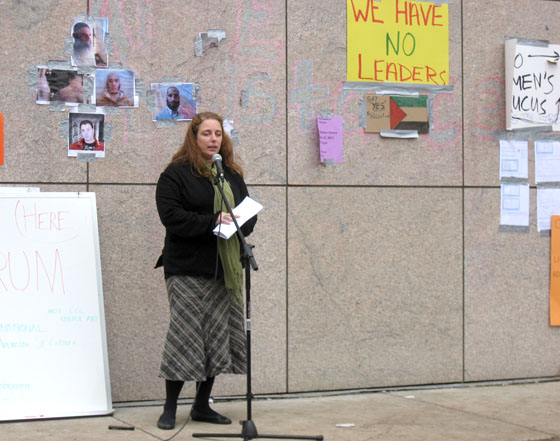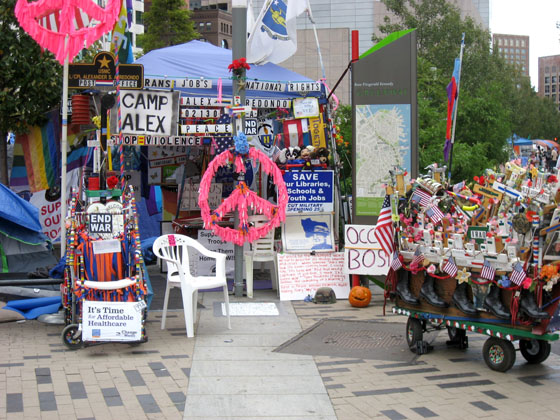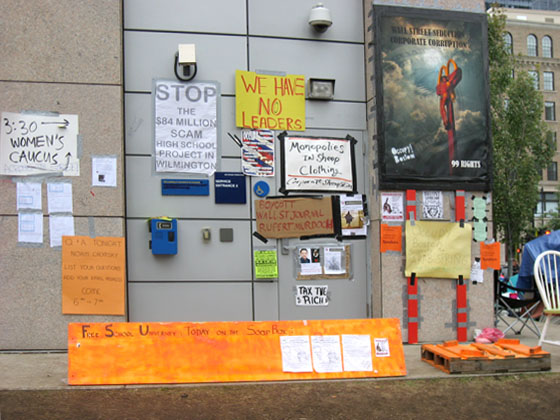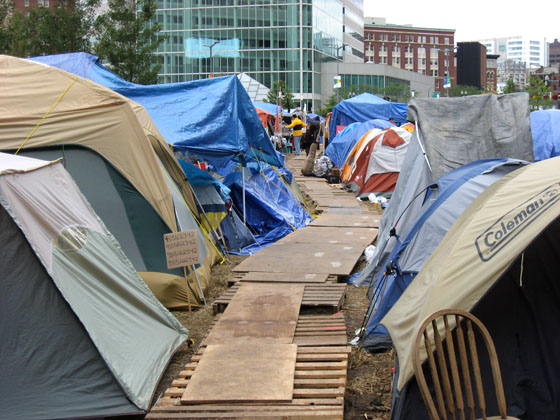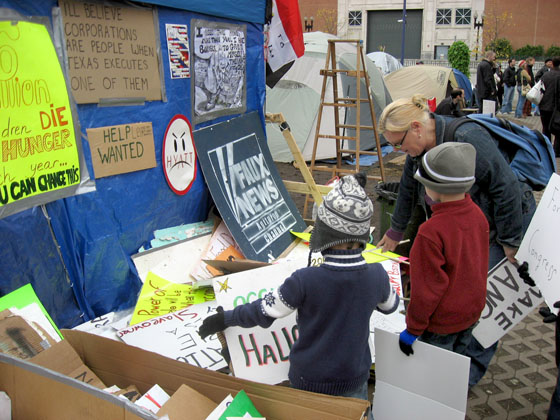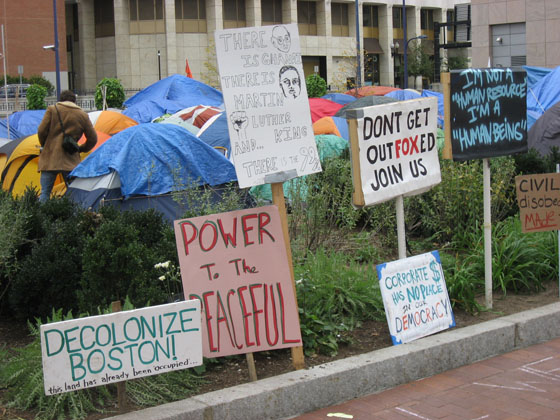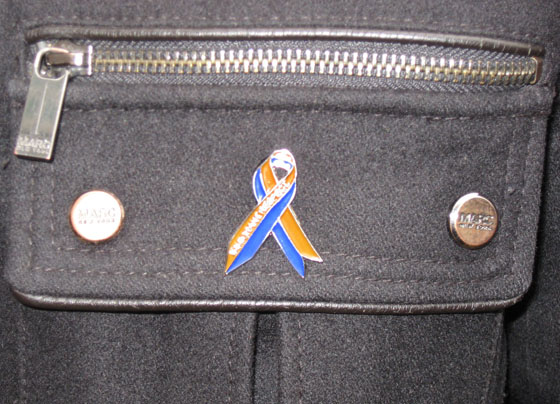Martha Buskirk
November 2011
From: Buskirk, Martha. “Tania Bruguera: ART & POLITICS”¨AT OCCUPY BOSTON,” Artnet, November 2011. (illust.) New York, United States.
http://www.artnet.com/magazineus/features/buskirk/tania-bruguera-at-occupy-boston-11-8-11.asp
Tania Bruguera: ART & POLITICS AT OCCUPY BOSTON
by Martha Buskirk
“Immigrant Movement International” announces the sign that appeared earlier this year outside a modest Queens storefront. Several thousand neighborhood residents have already taken advantage of community services that include English classes, legal referrals, and the establishment of a local youth orchestra. What visitors drawn by these resources may not know (or consider particularly relevant) is that they have also been participating in an art project initiated by Tania Bruguera.
Even those visitors to the office in Queens who know something of the project’s background find that it offers no audience position, says Bruguera of the initiative. The only way to partake is to be involved. In this respect she is tapping into an expanded definition of art that includes what has lately come to be called Relational Esthetics as well as Allan Kaprow‘s much earlier Happenings, where he too emphasized experience through participation.
Its simultaneous status as art confers certain advantages, including the fact that Bruguera is not competing with local community organizations for the same funding, and a profile that extends its visibility well beyond the local setting. There are, however, also constraints associated with building this agenda on an art-based identity, including the fact that Bruguera’s initial idea of attempting to foment something akin to a political party ran up against restrictions on direct political activity governing the nonprofits that have sponsored the project’s New York incarnation.
The most recent manifestation of this art-as-activism project took place in Boston, Oct. 21-23, 2011, in collaboration with Experience Economies, an itinerant Boston-based initiative by Rebecca Uchill and Gavin Kroeber that is equally committed to an expanded definition of art. A series of workshops and discussions with local activists and youth groups culminated in Bruguera’s participation in a public forum on immigration presented as part of the Free Schools University at Occupy Boston.
In Boston, with no symbolic destination like Wall Street to swarm over, protesters have set up camp in Dewey Square, across the street from South Station and a stone’s throw from many of the banks and financial institutions that are located downtown. A speaker’s platform along one side (complete with a solar-powered public address system) plays host to a vital array of programming, drawing high-profile participation from activists like Noam Chomsky, who gave an address as part of the Howard Zinn Memorial Lecture Series, as well as less well-known activists articulating a wide range of concerns.
At the immigrant forum, a small but intent crowd listened to speakers who called on students in the audience to recognize the immigrants who clean their campuses and serve the food in their dining halls as a vital part of their 99 percent, and who drew pointed comparisons between the fortifications along the U.S./Mexico border and the Berlin wall. (“Mr. Obama, tear down this wall” was one audience member’s perfectly timed interjection.)
In her forum address, Bruguera recounted early experiences in the U.S., including looking forward, from her Cuban perspective, to observing a free election in 2000. Yet her “first encounter with democracy was witnessing a broken system”, and she was amazed when people did not take to the streets in protest.
The idealism here stands in refreshing contrast to the party atmosphere at the top end of the art world. Yet Bruguera is the first to admit that her own immigrant experience is far different from many of those she would like to reach. Within the art world, the label of choice is “international,” referring to itinerant artists who move from project to project with a relative ease that stands in sharp contrast to the experience of those displaced by political or economic necessity. And the specific dynamics of each community leave open the question of whether it is indeed possible to forge a global immigrant identity.
It remains to be seen whether Bruguera’s immigrant initiative has the potential to take on a life of its own, akin to the groundswell fueling the Occupy movements, or whether it will remain more narrowly identified as a form of activism as art, authored by Tania Bruguera.
